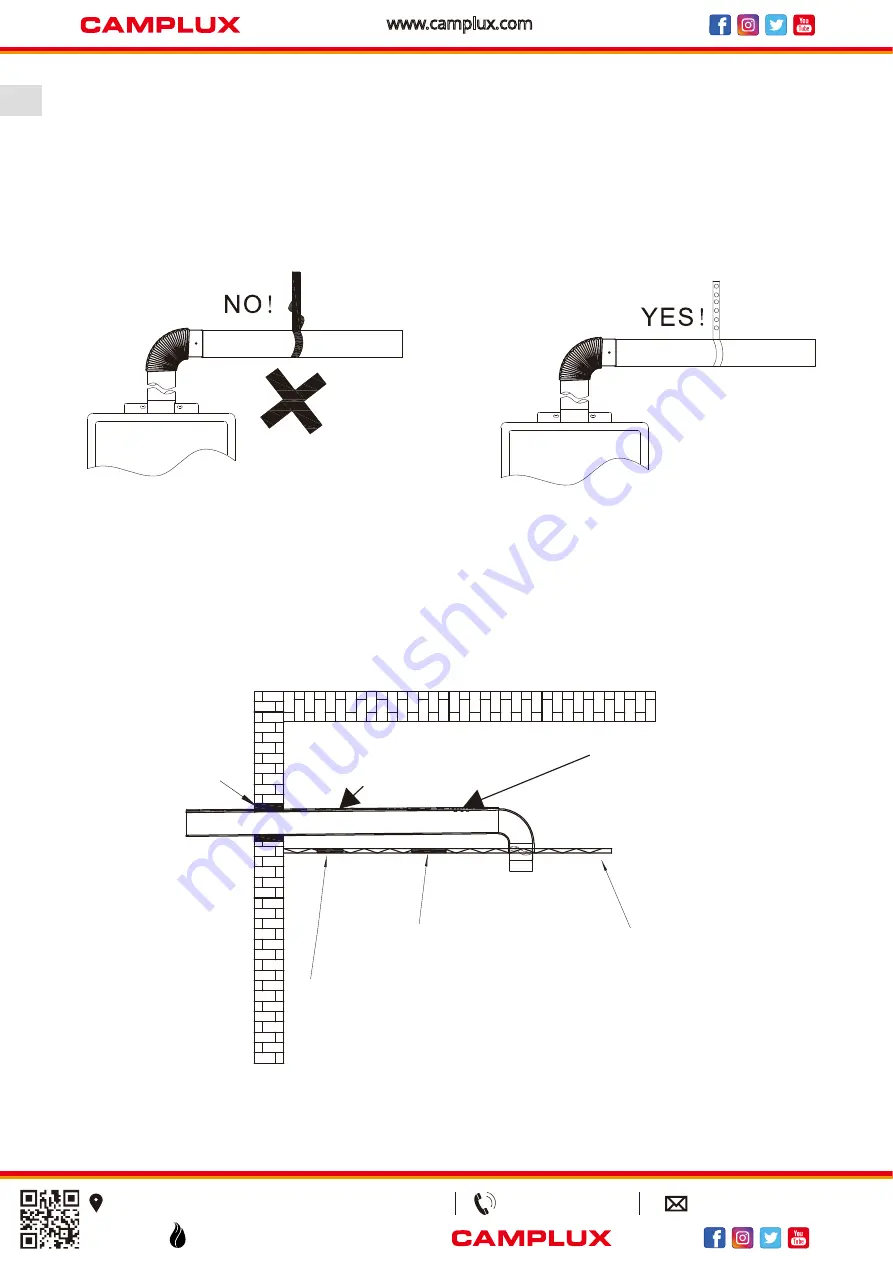
www.camplux.com
17
Use a vent pipe with an antidisconnection structure.
The use of a High Temperature Silicone (500°F) may be required to seal vent connections. To prevent acciden-
tal gas exhaust leakage, apply a 1/4” wide bead approximately 1/4” from the end and another bead against the
joint side of the stop bead.
Follow vent manufacturer’s installation instructions.
The unit can be vented either horizontally or vertically.
Vent pipe runs must be adequately supported along both horizontal and vertical runs.
The maximum recommended unsupported span should be no more than 5 feet. Support isolation hanging
bands should be used. DO NOT use wire. (See diagram below).
Venting Through Closed Spaces
If the vent piping passes through a closed space, wrap the vent pipe with inflammable insulation material that
is at least 3/4” thick. DO NOT let the insulation material make contact with flammable materials. A minimum
clearance of 6” between the vent pipe and ceiling should be maintained. Follow local codes.
For maintenance and inspection purposes, the following holes are required to be made:
• Two (2) inspection openings that allow access to venting. One (1) of these openings should be close to
where the vent pipe enters the ceiling. The other opening should be near the vent termination.
• A ventilation hole with a 16 sq. in. opening should be made at least every 10 feet.
NOTICE :
Vent pipes must be completely insulated with inflammable material when installed in alcoves,
closets, and garages and must not touch any flammable material.
1/4” Per Feet
Downward Slope
Ceiling
Board
Inspection
Hole#2
Insulation
Material
Insulation
Material
Inspection
Hole#1
Visit Us: Camplux.com
3330-A Marathon Ct Charleston, SC 29418
(844) 538-7475
















































